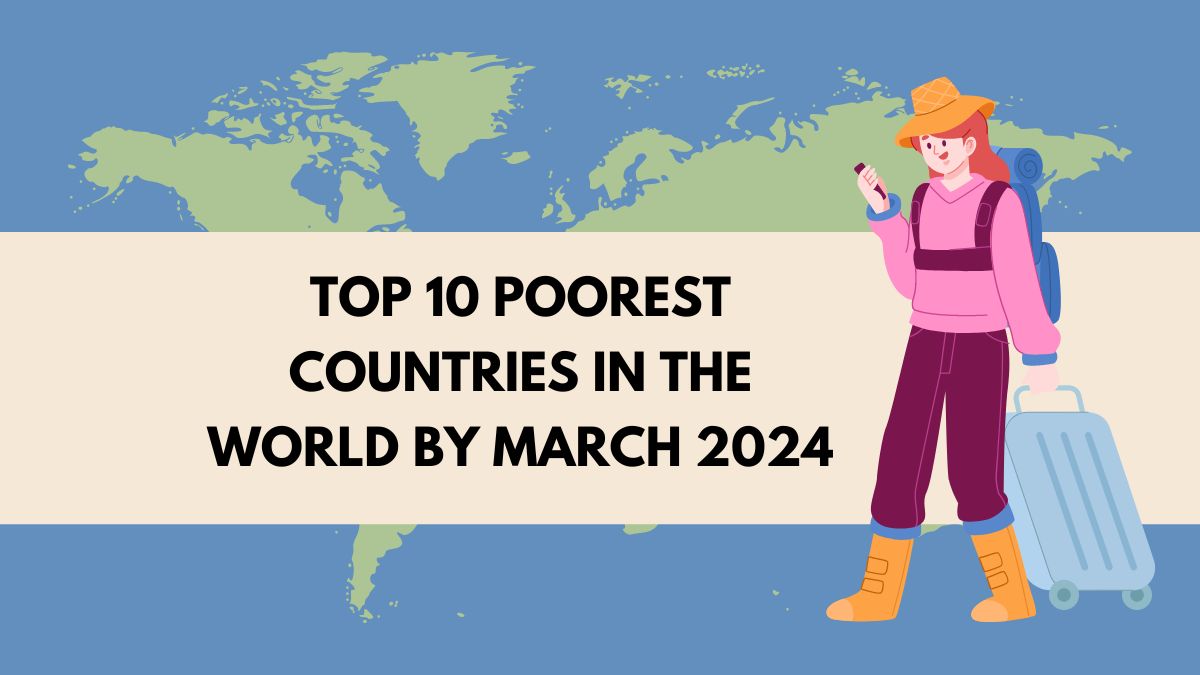Burundi is the poorest country in the world, with a GNI PPP of $840. The difference in GNI between the richest and poorest countries is a staggering $116,380 (Atlas method) and $101,670 (PPP). The average Atlas method GNI among all countries is $15,780, making the average country over 58 times richer than Burundi. The average GNI PPP is $23,329, making the average country over 26 times richer than Burundi.
Top 10 poorest countries in the world in table form
| Rank | Country/Territory | GDP-PPP ($) |
|---|---|---|
| 1 | South Sudan | 476 |
| 2 | Burundi | 890 |
| 3 | Central African Republic | 1,109 |
| 4 | Democratic Republic of the Congo | 1,579 |
| 5 | Niger | 1,579 |
| 6 | Mozambique | 1,584 |
| 7 | Malawi | 1,668 |
| 8 | Liberia | 1,789 |
| 9 | Chad | 1,807 |
| 10 | Madagascar | 1,907 |
Top 10 poorest countries in the world in Detail
Based on the table you provided, here’s a detailed breakdown of the ten poorest countries in the world in 2024, listed in ascending order of their GDP-PPP (Gross Domestic Product at Purchasing Power Parity) in USD.
1. South Sudan
- GDP-PPP ($): 476
- South Sudan, gaining independence in 2011, is the youngest nation in the world and the poorest according to this ranking. Its economy is overwhelmingly dependent on oil, but ongoing conflict, governance issues, and lack of infrastructure have severely limited economic growth and development.
2. Burundi
- GDP-PPP ($): 890
- Located in East Africa, Burundi’s economy is heavily reliant on agriculture, which is vulnerable to weather variations and soil erosion. Political instability and limited access to education and health services further complicate its development efforts.
3. Central African Republic (CAR)
- GDP-PPP ($): 1,109
- The CAR is a landlocked country in Central Africa. Despite its significant mineral deposits and other resources, it remains impoverished due to ongoing conflict, poor infrastructure, and governance challenges.
4. Democratic Republic of the Congo (DRC)
- GDP-PPP ($): 1,579
- The DRC, in Central Africa, is endowed with vast natural resources. However, prolonged conflict, political instability, and corruption have severely impacted its economy and infrastructure, making it one of the poorest countries globally.
5. Niger
- GDP-PPP ($): 1,579
- Niger, situated in West Africa, is characterized by its landlocked geography, desert landscapes, and reliance on agriculture. Security concerns and high population growth also pose challenges to its economic development.
6. Mozambique
- GDP-PPP ($): 1,584
- Mozambique, located along the southeast coast of Africa, has an economy that is improving but still faces significant challenges due to political instability, natural disasters, and a high debt burden.
7. Malawi
- GDP-PPP ($): 1,668
- In southeastern Africa, Malawi’s economy is largely agrarian, with a substantial portion of its population engaged in subsistence farming. The country faces challenges such as high population density, limited economic diversification, and vulnerability to climate change.
8. Liberia
- GDP-PPP ($): 1,789
- Liberia, located on the West African coast, has an economy primarily based on agriculture and mining. However, political instability, poor infrastructure, and the Ebola outbreak have significantly hindered its economic progress.
9. Chad
- GDP-PPP ($): 1,807
- Chad, situated in Central Africa, is ninth on the list. Its economy suffers from its landlocked position, reliance on agriculture, and the impact of internal conflicts and instability on its economic development.
10. Madagascar
- GDP-PPP ($): 1,907
- Madagascar, an island nation located off the southeast coast of Africa, ranks as the tenth poorest country in the world. The country’s economy is heavily reliant on agriculture, which is vulnerable to weather-related shocks, contributing to its low GDP-PPP.
The Struggle of the Poorest Nations
The five poorest countries face numerous challenges, including:
- Rapid population growth, straining resources and services.
- Reliance on subsistence agriculture, with limited economic diversification.
- Lack of access to food, healthcare, and education.
- Political instability and conflict.
- High rates of poverty and malnutrition.
The Global Divide
Africa, where the majority of the world’s ten poorest countries are located, has a PPP of $6,825 and an Atlas method value of $2,570.56, making it the poorest continent in the world.
Addressing the vast disparities in GNI and overall development between the richest and poorest nations remains a significant global challenge, requiring concerted efforts from governments, international organizations, and civil society.




 Which City is known as the City of Grape...
Which City is known as the City of Grape...
 Who was Known as the Court Poet of Samud...
Who was Known as the Court Poet of Samud...
 Which City of Norway is Known as the Cit...
Which City of Norway is Known as the Cit...







